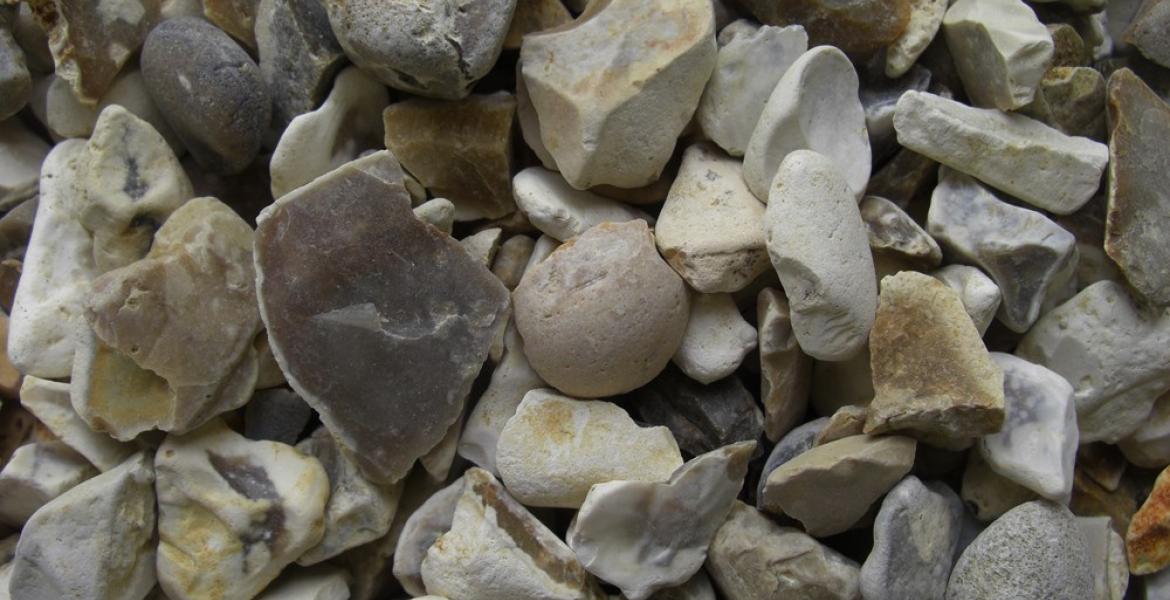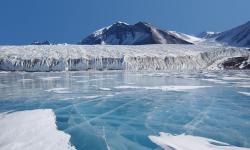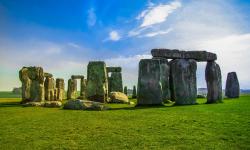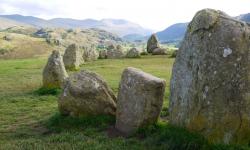The Stone Age: an Introduction
Key facts about the Stone AgeThe earliest part of human prehistory, running from about 3.3 million years ago until (in Britain) about 2500BCE. It is defined by the use of stones (rather than metals) as tools.
- The Stone Age covers more than 99% of our history
- It runs from about 3.4 million years ago until about 2500BCE
- The Stone Age was an important time for change, physically, intellectually and socially
The Stone Age is the name given for human prehistoryThe time in the past that happened before history began to be recorded. (that happened before history, that’s not written down) from the first humans who used tools through to the use of metal. The standard date for the start of the Stone Age is placed at about 2.8 million years before the present (BP'Before present', usually refers to up to 10,000 years BP, after which it switches to BCE.). However, recent finds are constantly pushing this date back, and many now place the start date of the Stone Age as far back as 3.4 million years BP. The Stone Age finishes at different times in different places, as the uptake of technology varied across the world: copper was first used in Britain around 2500BCE whilst it was being used in Serbia around 5000BCE. It is called the Stone Age because much of the physical evidence left behind by humans (apart from bones and some monuments) is stone tools. Stone tools, being made of stone, last a long time, and so these tools are mostly what we have left of the people who used them. That doesn't mean that they didn't use other things, such as wood, just that the wooden tools haven’t lasted as long.
The standard date for the start of the Stone Age is placed at about 2.8 million years before the present (BP'Before present', usually refers to up to 10,000 years BP, after which it switches to BCE.). However, recent finds are constantly pushing this date back, and many now place the start date of the Stone Age as far back as 3.4 million years BP. The Stone Age finishes at different times in different places, as the uptake of technology varied across the world: copper was first used in Britain around 2500BCE whilst it was being used in Serbia around 5000BCE. It is called the Stone Age because much of the physical evidence left behind by humans (apart from bones and some monuments) is stone tools. Stone tools, being made of stone, last a long time, and so these tools are mostly what we have left of the people who used them. That doesn't mean that they didn't use other things, such as wood, just that the wooden tools haven’t lasted as long. There is a growing body of evidence showing that the people of the Stone Age didn't just use stone: antler and bone tools are being found regularly, and there are some more unusual finds, such as the rope from Lascaux cave in France, and an impressive of textiles left in some fired clay found in the Czech Republic, which dates to about 26000BP. In addition, careful study of the minute wear marks left on the stone tools can give an indication of what they were used for, and analysis of this suggests many were used for the working of organic material.
There is a growing body of evidence showing that the people of the Stone Age didn't just use stone: antler and bone tools are being found regularly, and there are some more unusual finds, such as the rope from Lascaux cave in France, and an impressive of textiles left in some fired clay found in the Czech Republic, which dates to about 26000BP. In addition, careful study of the minute wear marks left on the stone tools can give an indication of what they were used for, and analysis of this suggests many were used for the working of organic material.
The Stone Age can be difficult to study, because what we know about it changes all the time as new discoveries are made, and because we don't have the quality or quantity of information we have for other periods. However, this can make it a very interesting time to study.
Because the Stone Age covers such a huge amount of time, it is broken down into smaller parts. These are:
- The PalaeolithicThe 'Old Stone Age'. See 'The Chronology of the Stone Age'., or Old Stone Age. This in turn is split into subdivisions of Lower (which is the oldest), Middle and Upper PalaeolithicThe most recent part of the Old Stone Age, which runs from about 45000BP to 10000BP. See 'The Chronology of the Stone Age'.;
- The MesolithicThe 'Middle Stone Age'. See 'The Chronology of the Stone Age'., or Middle Stone Age; and
- The NeolithicThe 'New Stone Age'. See 'The Chronology of the Stone Age'., or New Stone Age
Each period contains significant events: the Palaeolithic is where modern humans, or Homo sapiens, evolved and when we saw huge variations in the weather; the Mesolithic, which began after the last retreat of the ice, We are technically currently experiencing an interglacial, a warm period between two colder periods. marks a time of development of human culture; and the Neolithic saw a huge change to the lives of humans through the introduction of farming.
We are technically currently experiencing an interglacial, a warm period between two colder periods. marks a time of development of human culture; and the Neolithic saw a huge change to the lives of humans through the introduction of farming.
Most of human history (or prehistory) is covered by the Stone Age. During this time, human species came, went and evolved, as did many plants and animals including the large species (or megafaunaLarge, and now mainly extinct, animals that lived during the Palaeolithic, such as woolly mammoths and sabre-toothed cats.) such as mammoths and sabre-toothed cats. The earth changed dramatically, as the ice sheets moved down from the north, drying the land and the seas, before retreating again, causing waves of floods. The last time this happened was about 10,000 years ago, after which the English Channel was again created and cut Britain off from the rest of Europe. Not just human species, but also human society and ability, were shaped during this time. Elements such as the use of tools, the way we gather or farm food, the way we eat, how we talk and interact with other people, with the land, and with animals, and what we believe, were all honed during this time.
Things to think about
- How are new discoveries changing the way we think about the Stone Age?
- Why is the Stone Age important?
- How can we study the Stone Age?
Further reading
It is always difficult to recommend books on prehistoric Britain because they become out of date as soon as they are published. But without a shadow of doubt the best book on the market at the moment is Stringer and Dinnis' book Britain: One Million Years of the Human Story.
- Log in to post comments






